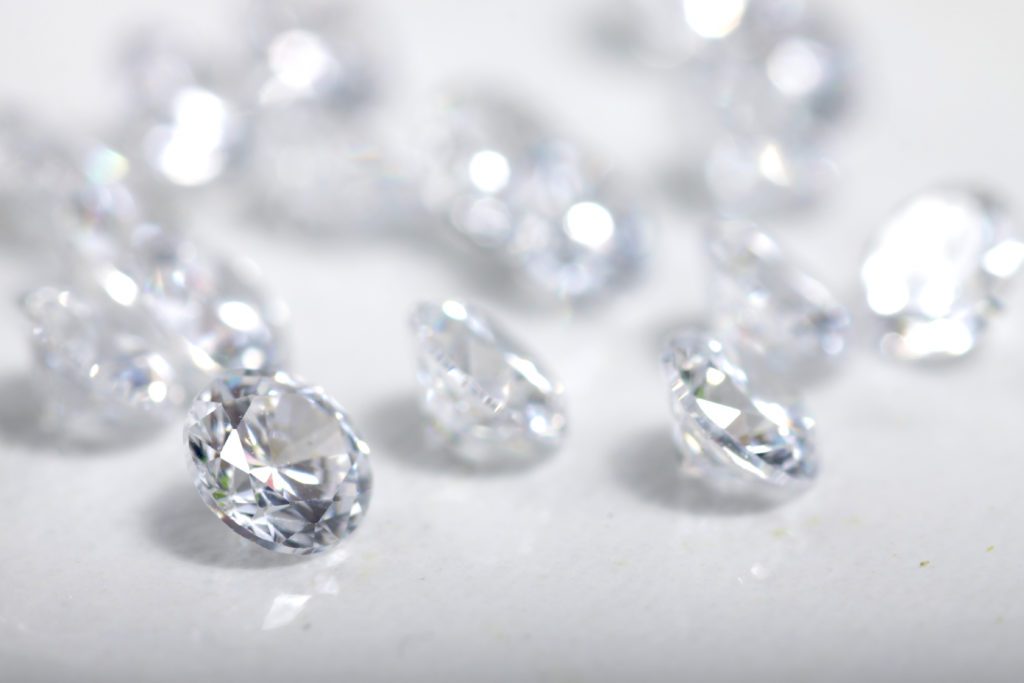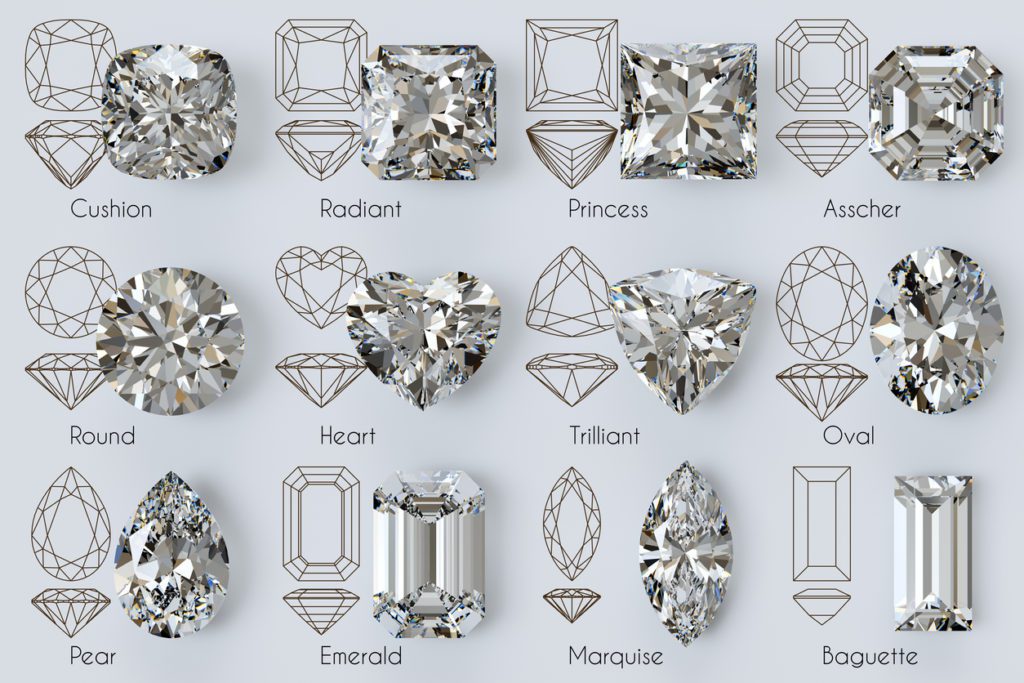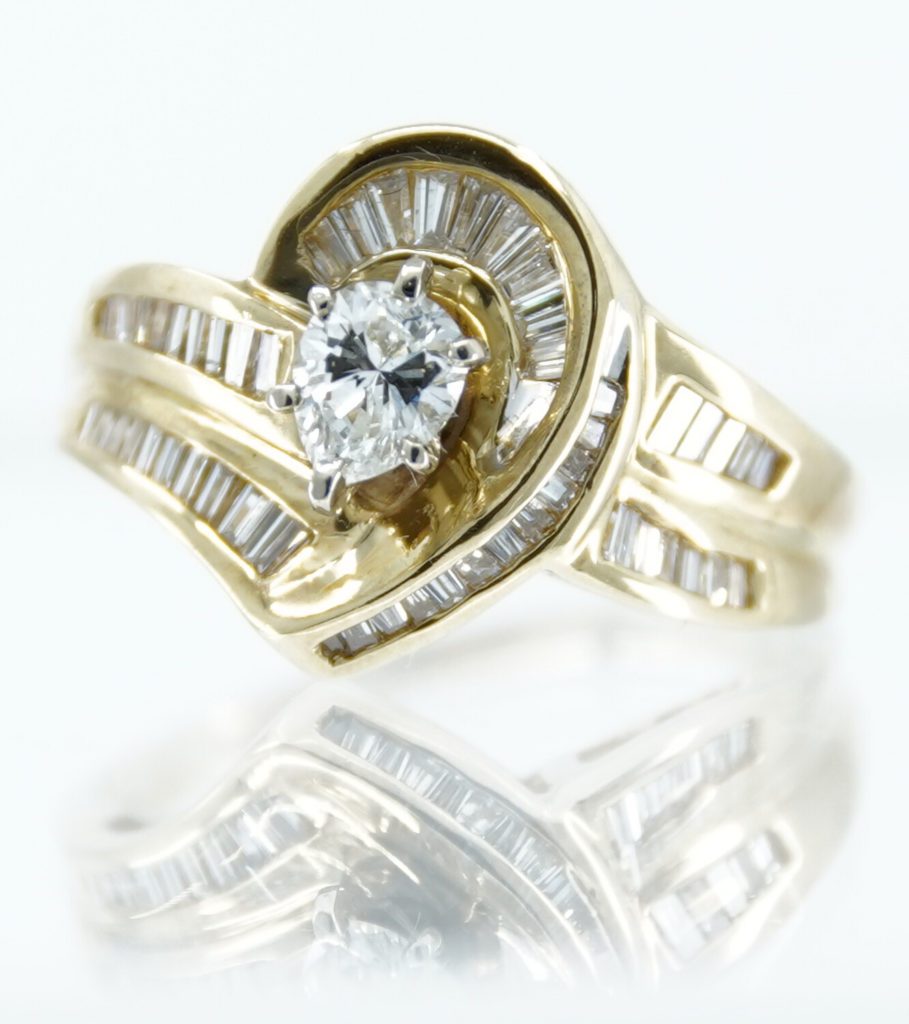What makes Halloween witches so captivating? Discover the origins, magic, and lasting allure of Halloween witches in our traditions. Learn how these figures evolved from ancient Celtic rituals to become icons of modern Halloween.
Key Takeaways
Halloween witches have evolved from ancient healers to modern symbols of mystique, enhanced by the elegance of diamonds.
Diamonds symbolize strength and durability, making them an ideal accessory for witches’ costumes during Halloween.
R&J Jewelry and Loan provides expert diamond appraisals, pawn loans, and a wide range of high-quality items for buying and selling, ensuring fair pricing and customer satisfaction.
The Enchanting World of Halloween Witches

The ancient Celts initiated the tradition of Halloween with their celebration known as Samhain, a period when it was thought that the divide between living beings and ghosts became particularly thin. Through time, the image of Halloween witches has metamorphosed. Originally seen as curative figures in early societies, they became symbols of intrigue and terror within contemporary mythos. This shift has only intensified our collective captivation with witches, securing their place in Halloween festivities.
Understanding this evolution requires critical thinking, as it involves analyzing how witches transitioned from ancient healers to modern symbols of mystique.
Witches command an irresistible mystique. They represent a combination of timeless knowledge, formidable power, and otherworldly allure that captures our collective imagination. Whether they are portrayed positively as healing wise women or negatively feared enchantresses warranting cautionary tales—we remain spellbound by these enigmatic figures’ unshakable appeal.
Their allure magnifies remarkably when paired with diamonds’ majestic sparkle—lending an air of everlasting grace to their already bewitching presence. Diamonds enhance diamonds. The mesmerizing essence inherent in witchcraft’s portrayal throughout history and folklore.
Even a Halloween Witches Needs a Diamond Ring to Wear
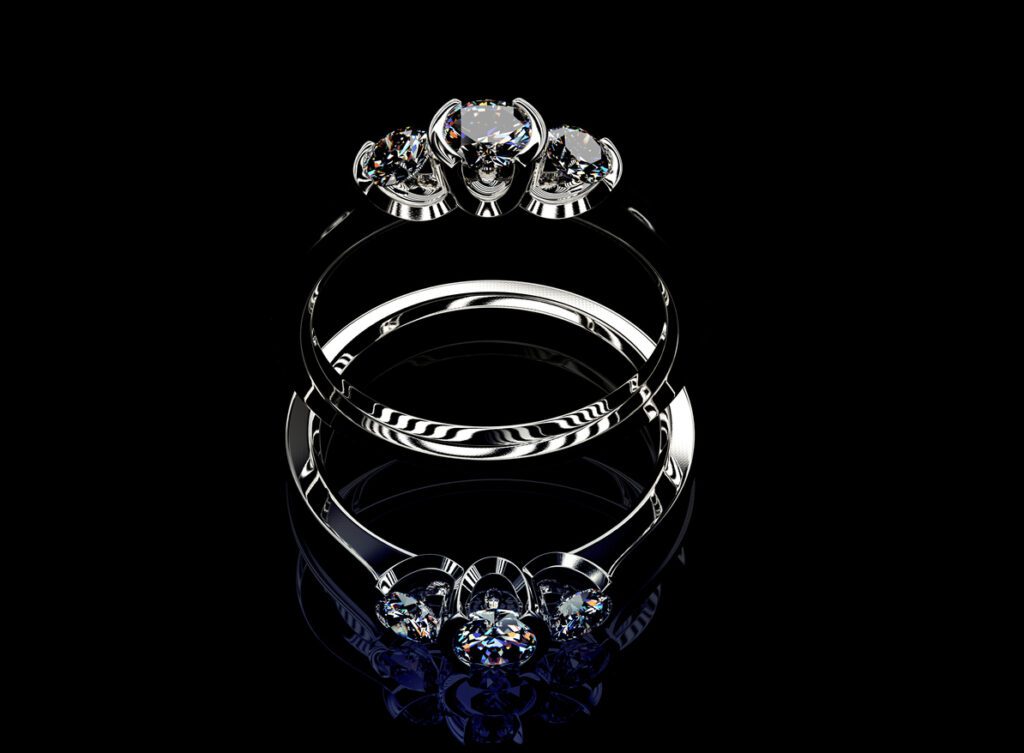
The captivating charm of diamonds isn’t lost on Halloween witches, who can recognize the sophistication and magnetism these gems bring. Representing durability and everlasting beauty, diamonds perfectly complement the mystical aura that surrounds a witch’s character. These stones have the unique ability to enhance even the eeriest of Halloween attire with a touch of grace.
In our exploration, we’ll explore why diamonds are an excellent match for those assuming the role of witches, by examining their emblematic significance and enduring nature. We will spotlight some renowned pieces of jewelry inspired by witches that encapsulate their enchanting spirit.
Join us as we dive into an intriguing journey where enchantment intertwines with the eternal splendor embodied by diamonds.
Why Diamonds?
Known for their incredible hardness and radiant sparkle, diamonds embody the essence of both strength and beauty—attributes that resonate strongly with the iconic image of witches. The diamond’s indomitable nature symbolizes resilience, an ideal representation for Halloween witches characterized by their spirit of adventure. Diamonds’ capacity to endure speaks volumes about their symbolism as emblems of everlasting fortitude and allure, echoing characteristics frequently attributed to witches.
Diamonds captivate with grace and mystery, which make them highly desirable adornments for any witch during Halloween festivities. Capturing attention with their gleaming radiance while carrying profound meaning at heart, these gemstones enhance a witch’s attire by infusing it with mystical charm. Whether showcased in an eye-catching diamond ring or exquisite earrings, diamonds endow spellbinding elegance upon the fantastical realm inhabited by witches.
In contemporary culture, magical narratives often draw parallels between diamonds and enchantment themes prominently depicted in movies like ‘Practical Magic’ and ‘Hocus Pocus.’’ These films exhibit jewelry pieces featuring dazzling diamonds, which reinforce their supernatural appeal linked to sorcery traditions. Such artifacts underscore the captivating potency inherent in diamonds. They serve as quintessential elements for those drawn towards celebrating the mysterious ambience typified by Halloween’s bewitching figures.
Famous Witch-Inspired Diamond Ring Pieces
Diamond painting kits influenced by witchery bring to life the enigmatic charm of sorcery across various artistic mediums. These kits often include depictions associated with Halloween, such as witches and dragons, highlighting the enchantment and mystical elements attributed to these legendary beings. The vibrancy of their colors, coupled with superior-quality crystals that adhere firmly, heightens their desirability.
Jewelry pieces inspired by famous witches not only encapsulate a sense of magical wonder, but also infuse an element of refinement and classiness. Such items range from necklaces featuring glistening gemstones to earrings that dance in the light, each meticulously crafted to spellbind observers. They exhibit outstanding artisanship along with intricate detailing, which allows diamonds’ everlasting elegance and allure to shine through each design.
These adornments represent more than mere fashion accessories. They are emblematic tokens expressing gracefulness intertwined with bewitching charm. Donning these jewels offers individuals an opportunity to embody the captivating essence of witchcraft, while adding a touch or shimmering radiance reminiscent of Halloween festivities. Whether assuming the guise of a playful enchantress or a commanding sorceress, incorporating jewelry imbued with inspiration from witches can enhance your presence dramatically at any gathering.
Understanding Diamonds
What are Natural Diamonds?
Natural diamonds are the epitome of timeless beauty and durability, formed over billions of years under intense heat and pressure deep within the Earth’s crust. These precious gems are composed of pure carbon, crystallized in a unique structure that bestows them with unparalleled hardness and brilliance. Mined from the earth, natural diamonds are rare treasures that have captivated humanity for centuries.
Their exceptional qualities make natural diamonds a popular choice for engagement rings and other fine jewelry. The allure of a natural diamond lies not only in its stunning appearance, but also in its enduring nature. When you choose a natural diamond, you’re selecting a gemstone that has withstood the test of time, symbolizing everlasting love and commitment. Whether set in a classic solitaire or a more intricate design, natural diamonds bring elegance and sophistication to any piece of jewelry.
Diamond Alternatives
Cubic Zirconia: A Popular Diamond Alternative
Cubic zirconia (CZ) has carved out a niche as a beloved alternative to real diamonds, especially in costume jewelry and fashion accessories. This synthetic gemstone, made from zirconium dioxide, dazzles with its brilliance and fire, often making it a convincing stand-in for natural diamonds. However, while CZ can mimic the sparkle of a real diamond, it falls short in terms of durability.
Unlike real diamonds, cubic zirconia is more susceptible to scratches and chips, which can diminish its luster over time. Despite this, CZ remains a popular choice due to its affordability and visual appeal. It’s important to remember that while cubic zirconia can add glamour to your ensemble, it is not a real diamond and lacks the enduring qualities of natural diamonds. For those seeking the look of diamonds without the hefty price tag, CZ offers a beautiful, albeit temporary, solution.
Diamond Jewelry for Halloween
Spooky and Sparkly Diamond Jewelry Ideas
Halloween is the perfect occasion to blend the eerie with the elegant, and what better way to do so than by incorporating diamond jewelry into your costume? Here are some enchanting ideas to add a touch of sparkle to your spooky attire:
Diamond-Encrusted Bat Necklace: Elevate your vampire costume with a bat-shaped necklace adorned with shimmering diamonds. This piece adds a glamorous twist to the dark and mysterious vibe of a vampire.
Spider-Shaped Diamond Stud Earrings: Add a creepy yet chic element to your look with diamond stud earrings shaped like spiders or other creepy crawlies. These earrings will catch the light and attention of everyone around you.
Diamond-Encrusted Skull Ring: For a witch costume with an edge, a skull ring encrusted with diamonds can be the perfect accessory. It combines the macabre with the magnificent, making your costume stand out.
Spider Web Diamond Choker: A choker with a spider web design, encrusted with diamonds, can add a dramatic flair to a gothic princess costume. This piece is both haunting and beautiful, perfect for making a statement.
Remember, diamond jewelry can transform any Halloween costume from ordinary to extraordinary. By pairing your spooky attire with some sparkly diamonds, you can create a look that is both enchanting and unforgettable. So this Halloween, let your inner sorceress shine with the magic of diamonds!
How to Test and Authenticate Natural Diamonds
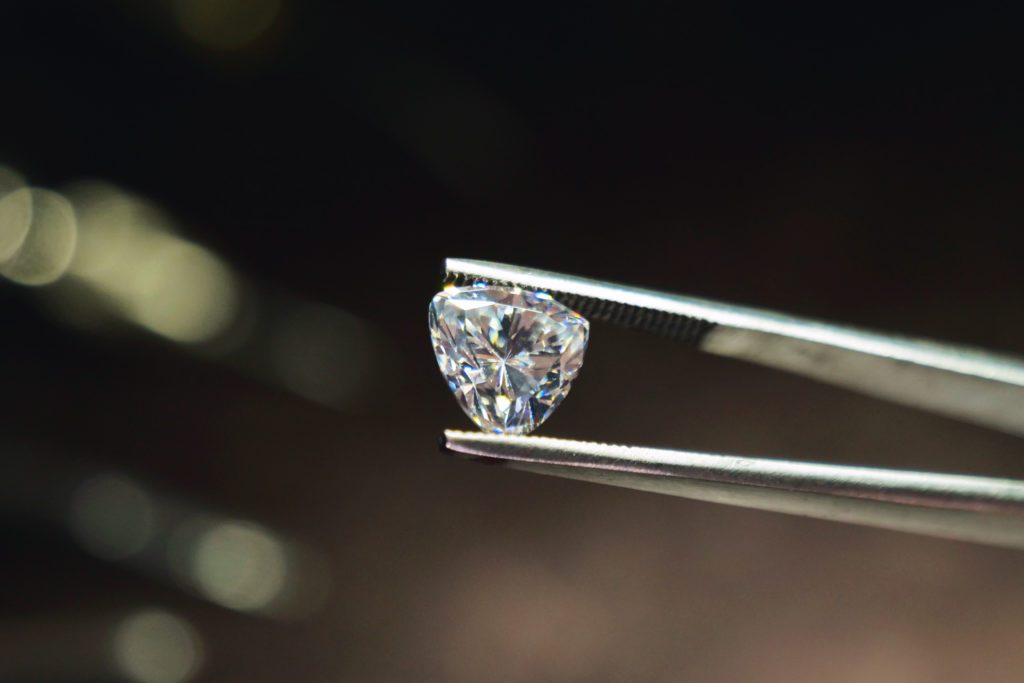
It’s essential to differentiate between real diamonds and fake ones, as the significant price gap, coupled with their distinctive quality and allure, is at stake. By mastering how to identify a diamond’s unique traits through its physical characteristics, and by carrying out certain tests, such as using a diamond tester, one can determine whether a stone is genuine or not. We’re set to delve into several strategies for confirming the authenticity of diamonds—ranging from visual examination methods to simple home-based experiments and expert assessments. Genuine diamonds can be distinguished from fake diamonds, including diamond simulants and lab-grown diamonds, by understanding their composition and appearance.
Being able to tell apart authentic gem quality diamonds from counterfeit versions or those that are merely simulating natural diamonds could protect you against financial pitfalls and frustration. The absence of imperfections in a gem does not definitively indicate it is a fake stone. Lab-grown diamonds are considered real due to their identical properties to natural diamonds. Mined diamonds typically exhibit small flaws that indicate authenticity. Not all real diamonds exhibit blue fluorescence under UV light. UV light can be used to test the authenticity of diamonds. We’ll provide insightful guidance, along with actionable techniques intended for securing peace of mind about acquiring nothing but the real thing.
Whether your intention involves investing in an exquisite diamond ring meant for a proposal, or simply assuring yourself of owning an authentic diamond piece, these verification approaches will prove indispensable during your search for true gem-quality stones.
Visual Inspection Techniques
A fundamental aspect of discerning whether a gemstone is a genuine diamond involves thorough visual examination. Instruments such as magnifying glasses and specialized jewelers’ loupes are employed to scrutinize the stone for clarity characteristics and internal inclusions. The presence of these small blemishes within the structure of a diamond often points to its realness, which can be detected through use of a magnifying glass.
For an effective assessment, it’s advisable to utilize at least 10x magnification when inspecting the stone closely. This allows one to detect various imperfections that confirm if you’re looking at an authentic diamond. Although this technique demands sharp vision and meticulous observation skills, it stands as an invaluable practice for those who have vested interests in verifying the legitimacy of diamonds.
At-Home Diamond Tests for Cubic Zirconia
Conducting at-home tests can effectively ascertain whether you have a real diamond. For instance, the fog test involves breathing hot air onto the surface of the diamond and watching how quickly it dissipates. Genuine diamonds defog almost instantly, whereas an imitation will stay hazy for a longer period. Similarly, during the water test, authentic diamonds—owing to their high density—will sink when submerged in water while counterfeits might float on top.
Subjecting your diamond to a heat test by warming it up for 40 seconds before plunging it into cold water is another trustworthy method. Due to its exceptional thermal conductivity, an authentic diamond won’t crack under such conditions. These procedures are straightforward and necessitate very few tools, but they offer quick preliminary results about whether your stone may be genuine or not.
Nevertheless, these homemade assessments come with constraints as they are unable to differentiate between natural diamonds and those created in labs despite being virtually identical in chemical composition as well as optical and physical properties. If certainty is what you’re after regarding your gemstone’s validity—a professional evaluation with specialized testing should be considered.
Professional Appraisal and Testing of Lab Grown Diamonds
If you have doubts about the genuineness of your diamond, it’s important to seek out a professional jeweler from a trustworthy establishment. Their expert assessment includes an examination of key characteristics such as cut, color, clarity, and carat weight. This thorough evaluation is instrumental in confirming both the quality and authenticity of your precious stone.
Jewelers employ specialized methods like gemological microscopy and utilize tools such as diamond testers that measure thermal conductivity to authenticate diamonds with precision. These devices are adept at distinguishing between lab-created diamonds and those that are naturally formed, providing insights far beyond what amateur testing can achieve.
It’s paramount to validate the legitimacy of a diamond to prevent potential financial loss or future disappointment. Consulting with a skilled jeweler affords assurance that your diamond is indeed real and meets high-quality standards. Relying on this individualized method for assessing value not only brings tranquility, but also reinforces confidence in your treasured asset.
Services Offered by R&J Jewelry and Loan

R&J Jewelry and Loan provides a range of services, including pawn loans, precise evaluations, as well as the purchase and sale of premier items. Utilizing state-of-the-art methods to assess diamonds, their experienced jewelers guarantee equitable pricing with clear transparency. We will delve into the specific offerings at R&J Jewelry and Loan, which include pawn loans, expert valuations, and luxury goods.
For those seeking short-duration financial solutions or meticulous assessments, or for transactions involving high-quality merchandise either through buying or selling—R&J Jewelry & Loan is a reliable option within the jewelry sector. Their dedication to ensuring client satisfaction, coupled with consistent fair market pricing, has cemented their reputation among consumers looking for integrity in their dealings with jewels.
Pawn Loans and Collateral Options
At R&J Jewelry and Loan, obtaining a pawn loan is an uncomplicated, confidential, and safe process. Clients can leverage high-value assets, such as diamonds, to receive short-term loans discreetly. This offers a rapid and straightforward method for borrowing money while ensuring privacy, appealing to those in urgent need of cash.
The establishment welcomes an array of precious items to serve as security for the loans they provide, allowing patrons to choose diverse ways to guarantee their borrowings. Such versatility, coupled with their secure and confidential handling, makes procuring a pawn loan from R&J Jewelry and Loan both effortless and accommodating.
Expert Appraisals and Fair Pricing
At R&J Jewelry and Loan, the team of friendly professionals performs skilled evaluations to guarantee just and trustworthy pricing for clients’ possessions. Their knowledge, coupled with a dedication to clear dealings, means customers experience equitable treatment filled with respect while their items are appraised. This individualized method fosters trust and assurance in their offerings.
The prices at R&J Jewelry and Loan can often be discussed, rarely turning down a reasonable proposal. Such adaptability regarding price points seamlessly merges with their proficient appraisal services, ensuring that customers achieve optimal value for their belongings. Whether one is looking to buy, sell or obtain a loan against valuables, R&J Jewelry and Loan delivers even-handed and sincere pricing arrangements.
Buying and Selling High-Quality Items
R&J Jewelry and Loan purchases and sells various premium items, including diamonds, upscale watches, and designer handbags. In their dedication to dealing with luxury goods, they ensure that customers are provided with high-caliber products suited to their individual tastes and requirements. The consistency in quality and the focus on customer satisfaction is clearly reflected throughout each transaction.
The establishment trades fine watches, branded handbags, and precious metals like gold, platinum, silver alongside diamonds. This extensive assortment of top-tier items provides customers with an expansive choice when it comes to selecting luxury merchandise. R&J Jewelry and Loan serves as a reliable venue for acquiring or disposing of elite-quality products, whether one is looking to buy or offer them up for loan or sale.
Summary
In essence, the intertwined significance of Halloween witches and diamonds lies in their shared representation of durability, allure, and enigma. This blog post explored the captivating intersection where these two fascinating subjects converge. We have provided valuable advice for verifying and determining the authenticity of diamonds to empower you to identify genuine pieces from counterfeit ones confidently. This way, you are not tricked by other diamond deals, but find those treats at R&J Jewlery and Loan.
R&J Jewelry and Loan provides various services tailored to meet your requirements, including pawn loans, professional evaluations, as well as purchasing and selling premier items. Their dedication to integrity, clarity in transactions, and commitment towards customer satisfaction establish them as a reputable entity within the jewelry industry. This Halloween season, don’t hesitate to channel your inner sorceress—adorn yourself with sparkles like radiant diamonds!
Frequently Asked Questions
What is the process of obtaining a short-term pawn loan from R&J Jewelry and Loan?
You can secure a short-term pawn loan from R&J Jewelry and Loan by using valuable assets such as diamonds as security.
The procedure is simple, confidential, and safe.
What types of items does R&J Jewelry and Loan buy or loan on?
R&J Jewelry and Loan specializes in buying or lending fine watches, designer handbags, and precious metals like gold, platinum, and silver, as well as diamonds.
They cater to those looking to secure value from their luxury items.
How does R&J Jewelry and Loan handle the appraisal of items?
R&J Jewelry and Loan expertly appraises items, providing a fair and honest price while ensuring transparency in the process.
You can trust their friendly associates to handle your appraisal with professionalism.
What is highlighted as a key benefit of using a pawn shop for loans?
A key benefit of using a pawn shop for loans is the speed and simplicity of the borrowing process, offering a private solution for those in need of immediate funds.
What types of products does R&J Jewelry and Loan accept as collateral for pawn financing?
R&J Jewelry and Loan accepts high-quality products such as diamonds, fine watches, and designer handbags as collateral for pawn financing. This allows you to leverage valuable items for quick access to cash.



